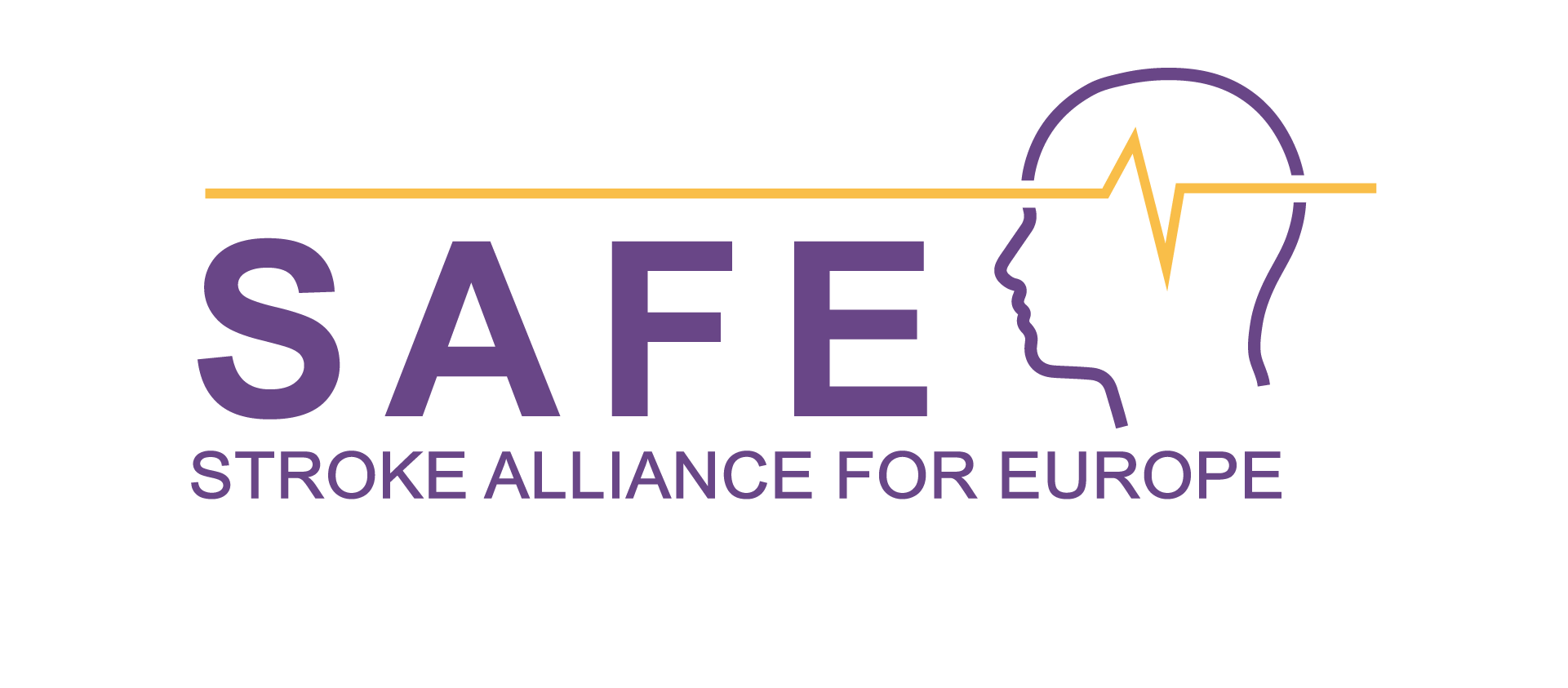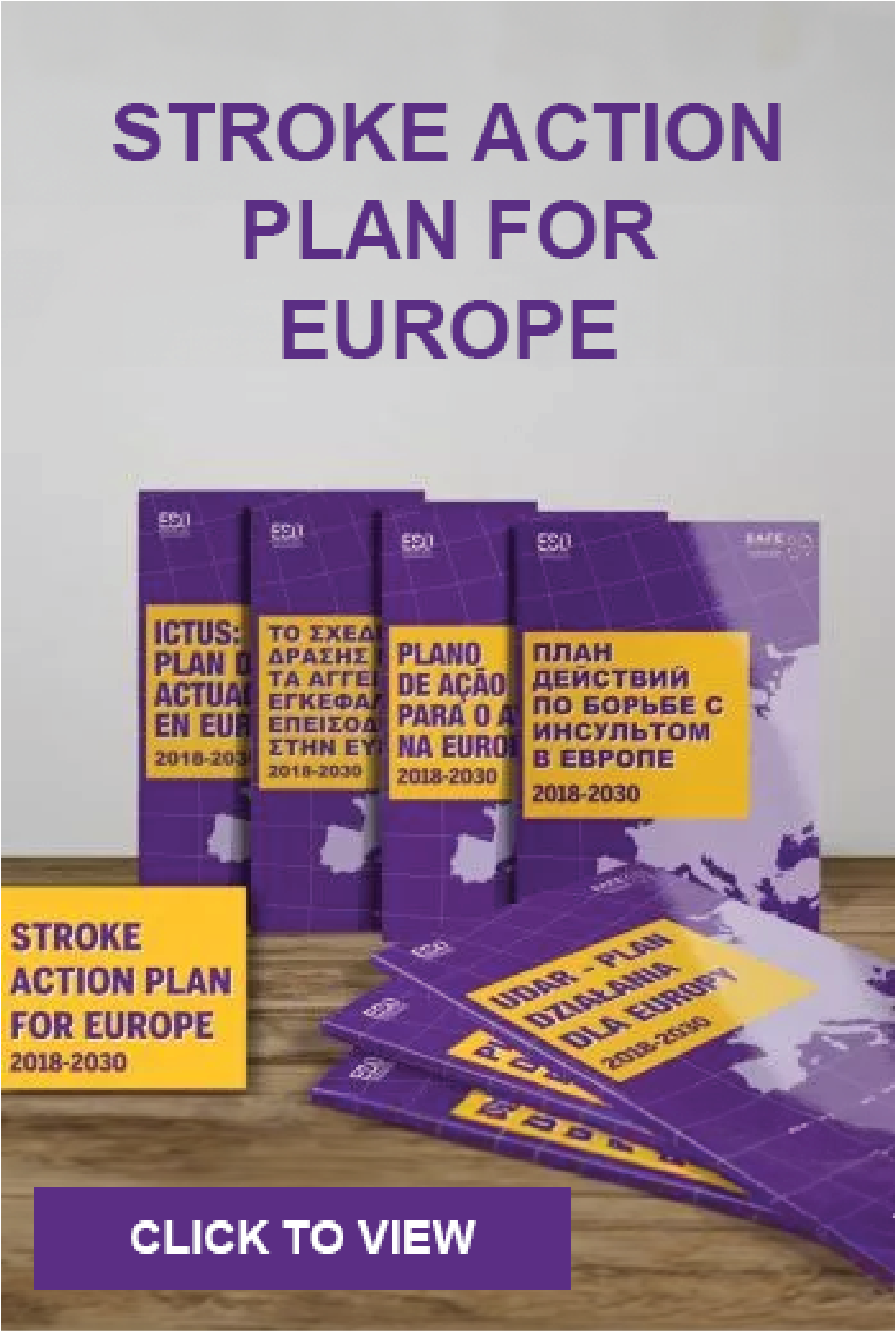Contents
About SAFE
Stroke is the leading cause of adult disability and one of the biggest killers across Europe. It is predicted that by 2040, there will be 12 million people living with stroke in Europe – an increase of 35% on the current figure of nine million stroke survivors[1].
SAFE’s vision is to greatly reduce the number of strokes in Europe and ensure all those touched by stroke get the support they need.
We engage in activities such as strengthening our SSOs, advocate at the European and national country level, and encouraging research, all of which contribute to the advancement of stroke prevention and the improvement of the quality of life of stroke survivors, their families and carers.
We are a non-profit-making organisation, representing a range of SSOs across Europe. Formed in 2004 in Brussels with a membership of eight European SSOs, we now have 37 members in more than 30 European countries.
What have we achieved?
Advocating for stroke
Our first strategic priority is to raise the profile of stroke and advocate for change at the European and national level. We do this through identifying issues and taking action.
- We published the Burden of Stroke in Europe (2018) and the Economic of Stroke in Europe (2020).
- In 2018, in collaboration with the European Stroke Organisation (ESO), we published the Stroke Action Plan for Europe (SAPE).
- We are co-chairs of the SAPE implementation committee with the ESO. The aim is that each country has a national stroke plan using SAPE as a foundation. There are 103 SAPE national coordinators in 52 countries and 11 countries have signed the Declaration to implement the SAPE. In addition, tools such as the Services Stroke Tracker and the SAPE website have been developed to help the NCs with their role.
- We joined the European Alliance for Cardiovascular Health in 2021 who are campaigning for an EU endorsed cardiovascular plan
- Our contribution to the EU Healthier Together Non-Communicable Diseases Initiative lead to the prominent mention of stroke and the SAPE in 2022.
Strengthening stroke support organisations
Our second strategic aim is to strengthen stroke support organisations (SSOs) throughout Europe. We do this through:
- Holding member’s meetings which provide networking and knowledge sharing opportunities between established and fledging SSOs. These meetings have resulted in many new SSO’s being set up across Europe;
- Providing advocacy tools such as the e-learning tool Stroke Support Organisation Faculty Tool (SSOFT) launched in 2018 – to ensure our members are equipped to be stroke advocates throughout Europe.
Raising awareness of preventing stroke
90% of strokes can be prevented, therefore our third strategic priority is to raise awareness of stroke prevention. In 2018 we launched the Stroke Prevention website, a dedicated stroke prevention website available in six languages, containing easily understandable information and advice on the 10 modifiable risk factors for stroke.
Focusing on life after stroke
Raising awareness of the urgent need to improve life after stroke care and support is our fourth strategic priority.
In 2021, we launched our European Life After Stroke Forum webinar series to raise the profile of life after stroke, to discuss research and best practice, and hear the stroke survivor view. We have held five webinars: Priorities, challenges and ways forward, Intimacy and sex; and Caring for the caregiver, Fatigue after stroke and Physical activity after stroke.
We had a global audience and over 1,100 attended. The series was endorsed by the European Brain Council, European Federation of Neurological Associations, the European Stroke Organisation and the World Stroke Organization. In 2022 the series was accredited by the European Accreditation Council for Continuing Medical Education (EACCME®).
In addition, we provide health information to those affected by stroke. In partnership with the Angels initiative, we produced the ‘Surviving Stroke’ brochures to help stroke survivors understand more about their condition, be more actively involved in their treatment decisions and learn more about the important next steps to recovery. These are available in 15 different languages across Europe.
Supporting stroke research across Europe
Our final strategic priority is to support stroke research throughout Europe. Since 2011, we have been involved in eight large EU trials. These trials have received funding from the EU Seventh Framework Programme and the EU Horizon 2020 research and innovation programme. Our role, along with our members, is to disseminate information and results from these projects.
2023 priorities
Advocating for stroke – we will:
- Increase the profile of stroke at the EU and national level through our work on the SAPE implementation committee, ensuring that the work-plans remain focused on improving patient outcomes and cover the whole care pathway including rehabilitation and life after stroke.
Strengthening stroke support organisations – we will:
- Hold one in-person members meeting.
- Relaunch our advocacy support programme for members.
Preventing stroke – we will:
- Relaunch the Stroke Prevention website on European Stroke Awareness Day.
Focusing on life after stroke – we will:
- Host our 1st in-person Life After Stroke Forum in Barcelonaand plan for 2024.
- Provide health information through the ‘Surviving Stroke’ Angels guides in 13 languages.
- Launch our ‘A life saved is a life worth living report’ in March and use this as our focus for European Stroke Awareness Day.
Supporting stroke research – we will:
- Share exciting new information about our EU research projects during Brain Awareness Week.
- Support the development of new EU research projects.
Why join us?
A key priority for us is the support of our member SSOs, and to ensure their concerns are given a voice in advocacy, in research and awareness programmes, policy, campaigning, and development initiatives.
Our latest member’s survey showed that 80% of respondents were either satisfied or very satisfied with their membership of SAFE, 92% agreed or completely agreed that we are an effective voice for the stroke community in Europe and 84% agreed or completely agreed that we provide networking opportunities for our members.
As our member, you will:
- Access a range of benefits to help support your work and growth.
- Help build a network across Europe and strengthen the collective voice of SSOs.
- Use our logo (after approval) on your materials as appropriate.
- Enhance our ability to drive change on stroke across Europe. Your logo and membership will be recognised on our website and appropriately in our materials.
- Ensure that the voice of stroke survivors and carers is heard in the discussions about policy and stroke resources at both EU and national level.
What are the benefits of joining us?
- Access to information, templates and pre-produced campaign and awareness materials and to European level data such as the Burden of Stroke and the Economic Impact of Stroke.
- Access to advocacy training such as the online learning – the Stroke Support Organisation Faculty Tool (SSOFT) and virtual training meetings.
- Patient information translated into the language of your country.
- Discounted place at European Life After Stroke Forum meetings.
- At least one free place at members meetings.
- Opportunities to present at members meetings.
- Networking with your peers through member meetings and subgroups.
- Invitation to SAFE General Assembly meetings.
- Board and officer election voting rights.
- Eligible to stand for board and officer election.
- Access to SAFE member-only online area on the SAFE website.
- Listing in the SAFE online membership directory.
- Right to use ‘member of SAFE’ logo on corporate materials (upon approval).
- Opportunity to submit conferences and educational activities for SAFE endorsement.
- Letters of support from SAFE for national advocacy on key stroke issues
- Regular members’ only newsletters.
- Showcase your work on a European level on our communication platforms such as our website, social media, networks and newsletter.
Who can join?
Our membership creates a community with like-minded organisations. Membership is open to civil society organisations from Europe engaged in supporting stroke survivors. Membership is available via three categories ordinary members, associate members and honorary members.
Ordinary membership confers voting rights and full ability to engage in all initiatives and consultations, and to access SAFE streams of funding if appropriate, and support to templates, press releases, the SSOFT training modules and all other material produced to support members to pursue their goals as SSOs.
Membership of SAFE will confer recognition of the organisation as a supporter of SAFE and the support of the voice of stroke survivors and carers in the stroke world, European (as defined by the World Health Organization) national organisations constituted according to the laws and customs of their country of origin, which represent the voice of stroke survivors and their families, support those at risk of and affected by stroke, and operate with a priority concern for life after stroke.
They will be non-profit, non-governmental organisations. The organisation will be able to demonstrate their involvement with stroke survivors and their families in the community, and that the aims of your organisation are guided by stroke survivor and family priorities.
Associate membership is available to organisations, constituted according to the laws and customs of their country of origin, which support those at risk of and affected by stroke, and who do not fulfil the criteria for ordinary membership.
They may be organisations or societies concerned with representing or driving forward the interests of medical professionals or researchers, or health professionals working in stroke related nursing, therapy, research and development. These will often be commercial organisations concerned with the development of treatments, aids, drugs, services, or research.
Associate membership does not confer voting rights and full access to all the benefits of ordinary membership, but may confer access to many benefits such as SSOFT training modules, information and campaign resources, invitations to events and participation in appropriate consultation initiatives, and gatherings. It also confers recognition of the organisation as a supporter of SAFE and the support of the voice of stroke survivors and carers in the stroke world.
Honorary members are individuals or organisations, constituted according to the law and customs of their country of origin, which have provided outstanding support to SAFE in furtherance of its objectives. It does not confer automatic voting rights or automatic usage of logo.
What are the subscription fees?
| Annual turnover | Fee 2023 | |||
| < €200,000 | = | € 541.01 | ||
| € 200,000 | to | € 500,000 | = | € 811.51 |
| € 500,000 | to | € 1,000,000 | = | € 1,103.23 |
| € 1,000,000 | to | € 2,000,000 | = | € 2,206.46 |
| € 2,000,000 | to | € 3,000,000 | = | € 3,395.07 |
| € 3,000,000 | to | € 4,000,000 | = | € 4,415.07 |
| € 4,000,000 | to | € 5,000,000 | = | € 5,620.20 |
| € 5,000,000 | to | € 6,000,000 | = | € 6,621.43 |
| € 6,000,000 | to | € 7,000,000 | = | € 7,725.79 |
| € 7,000,000 | to | € 8,000,000 | = | € 8,829.12 |
| € 8,000,000 | to | € 9,000,000 | = | € 9,933.27 |
| > €9,000,000 | = | € 11,036.40 |
Associates – only pay the minimum fee
[1] A What Cost, the Economic Impact of Stroke in Europe, 2020, www.safestroke.eu/economic-impact-of-stroke/
Join us
To become a member of SAFE, please complete this application form: membership application form
For more information, please contact info@safestroke.eu
Members only resources
Some content throughout the various sections of this website is reserved for SAFE members only.
Here are a few examples of the areas exclusively for members:
- Discussion forum
- Reports from Board meetings
- General Assembly documentation
When you attempt to access a file in the SAFE “members-only” area, you will be prompted to log-in or register when you visit for the first time.




